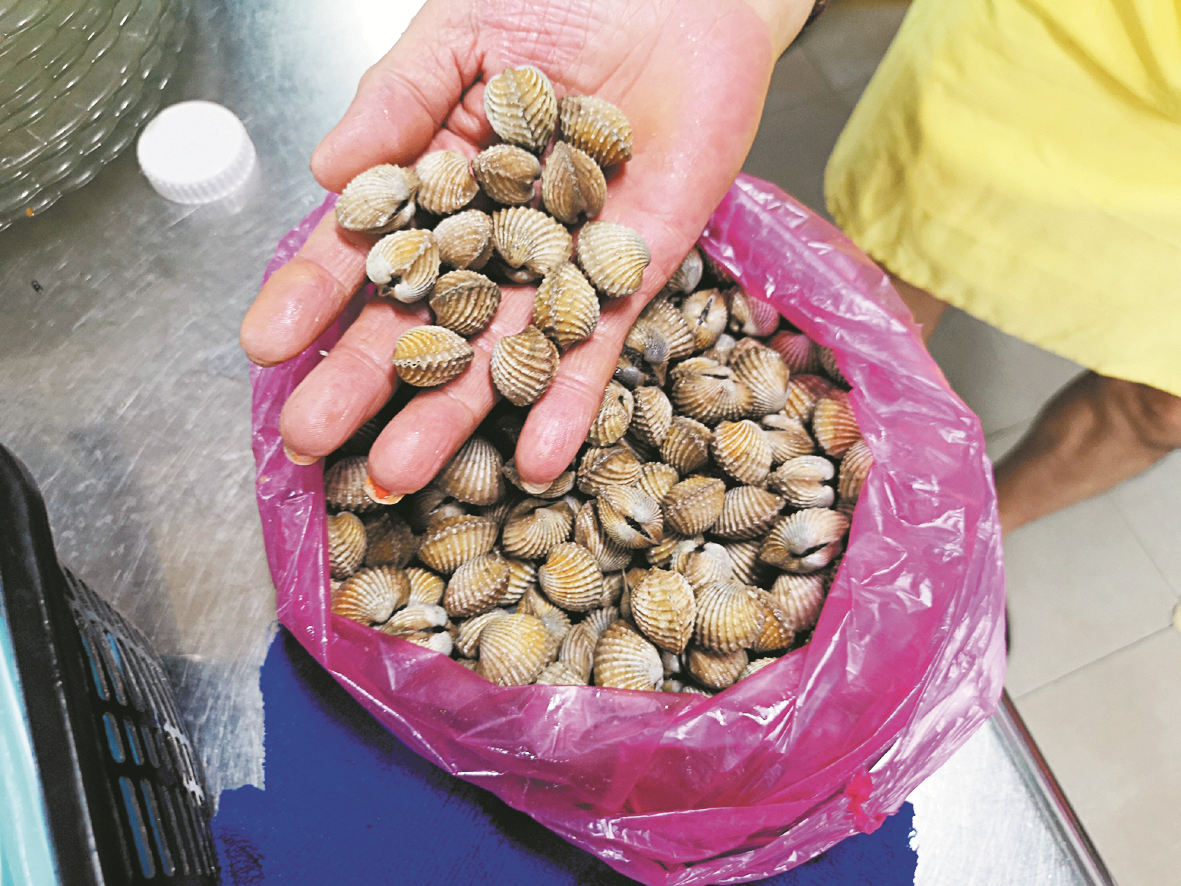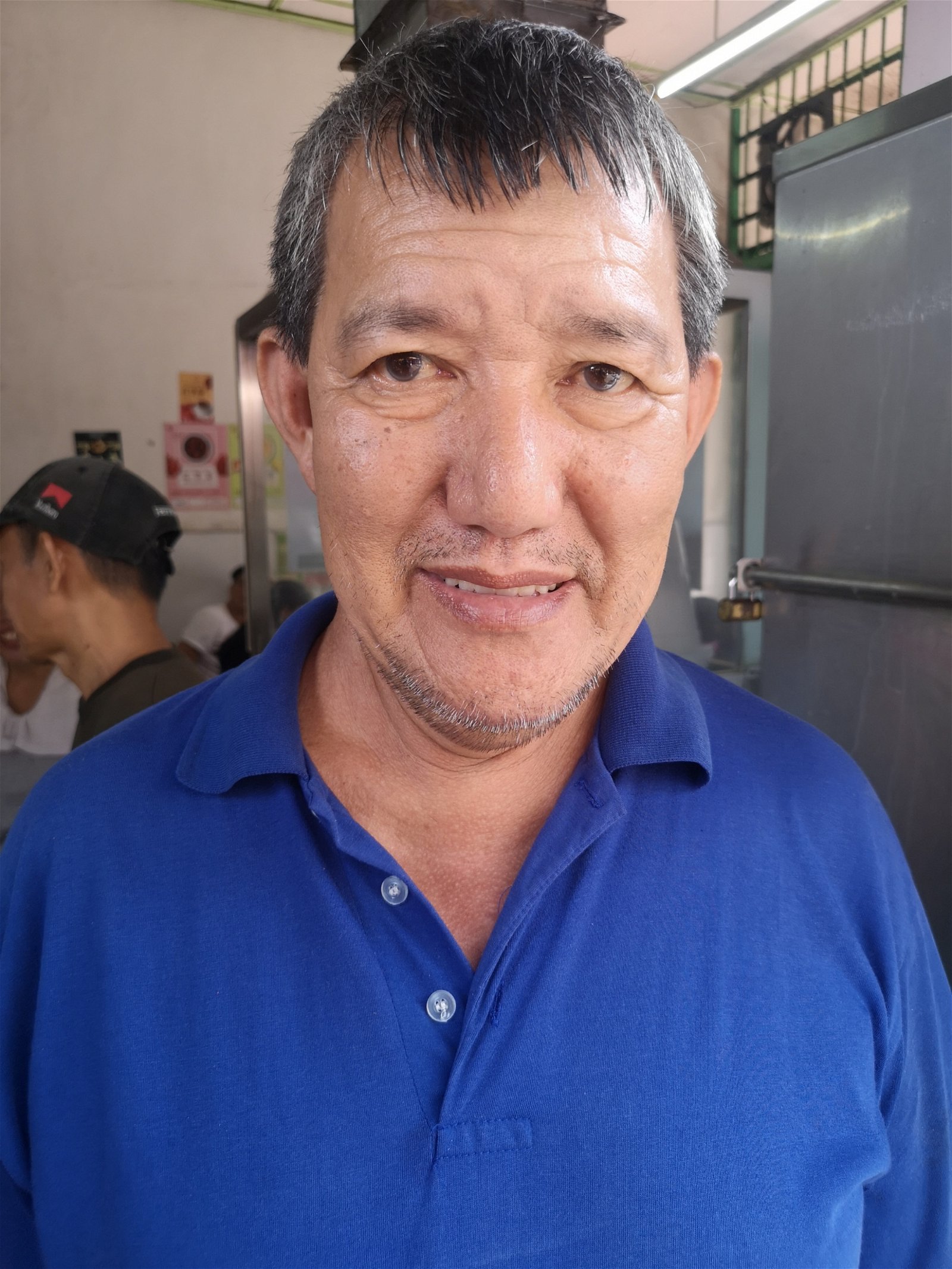BLOOD COCKLES IS GETTING MORE EXPENSIVES, PENANG CHAR KUEY TEOW LOSSES ITS SAVORINESS.

Blood cockles is crucial ingredient to the Penang rice noodle, widely known as Penang Char Kuey Teow. As the seafood is getting more pricier, with its declining quality, stall owner no longer added in blood cockle into dish in consideration of its price, causing this dish loses its specialty characteristic.
Blood cockles, sausages and shrimps are the soul to the Penang Char Kuey Teow, however the well-known dish lately is not served with blood cockles. Even when the blood cockles are served within the dish, their size is reported to be tiny.
Stall owner in Cecil Market, Mr. Ong explained that the booming price of blood cockles highly affects the cost of the dish, therefore he decided not to serve blood cockles, until the price become lower and affordable.
He stated that, when he started this business in 2014, the blood cockles was priced at RM6 per kilogram with highly quality.
The increase price is outrageous when compared the price in the first half year of 2019 (RM10 per kilogram) to the current price (RM16 per kilogram).
“Blood cockles nowadays not only is expensive, its quality and size is worsen compared to last time.”

He explained, 1 kilogram normally contains up to 80 cockles, therefore each of them cost about RM0.20. After cleaning and extracting the cockles from its shells, the cost of each cockles hiked to RM0.30. When 3 pieces of blood cockles are served, the cost of only the cockles cost RM0.90. The cost also further increases when other ingredients are getting more expensive, therefore the Char Kuey Teow has to be prices up to RM6.
He mentioned that, he previously served blood cockles in char Kuey Teow, but due to the price increases, he stopped serving the ingredient for the time being. When the time drops to a reasonable value, he will continuously serve Char Kuey Teow with blood cockles. Mr. Ong reported that, he once replaced the blood cockles from local source with those imported from Thailand. However, the rubbery texture of Thailand cockle is not favorable by the local community, causing him to stop serving the Thailand cockles.

Reject ‘extra serving’ to avoid portion-price comparison.
Certain stall owners still persist to serve blood cockles in char Kuey Teow, but they no longer provide extra serving at extra charge, to avoid unwanted quarrels due to comparison to the cockle pieces given with the extra charges.
Char Kuey Teow hawker in Lebuh Keng Kwee, Mr. Lim Tiong Ren (63 year-old) mentioned that, he will still persist to serve blood cockles in Char Kuey Teow to maintain its traditional savory taste, even at increased cost of blood cockles.
He said, the blood cockles in previous years were used to be fresh and big in size, however, the cockles lately is more expensive with lower quality. The meat from each cockles is still very little. “The cockle once fried, will become smaller.”
Therefore, even though he still serves blood cockles in the dish, he will not provide extra serving of blood cockles when customer requests at extra charge. That is mainly due to the shortage of blood cockles as well as the potential misunderstanding that could happen when the customer does not satisfy with the extra blood cockles being served.

Climate, pollution and overfishing causes the production decline.
Prof Dato’ Dr. Aileen Tan Shau Hwai, Director of Centre for Marine and Coastal Studies, Universiti Sains Malaysia highlighted that, anthropogenic pollutions, overfishing, climate change and other factors highly affects the habitat of blood cockles, therefore causing the reduction. She also mentioned that, blood cockles habitat covers the west coast of Peninsular Malaysia, which includes the Straits of Malacca, Seberang Perai (Penang) and the coastal region of North Perak.
Dr. Aileen explained that, Indonesia forms a natural protection to the west coastal area, by windering the monsoon wind, that could drive the coastal mud. Therefore, enabling the growth of blood cockles and other marine life. However, the cockle production area in east coastal is threatened by the wave and rainfall driven by Northeast monsoon as this area is directly open to South China Sea without any protection.
Based on statistic, she said that 1995 was the year with peak production of blood cockles, a total of 100,275metric tonnes of blood cockles were produced as that year. The production was unstable in the consecutive years, where only 45674 metric tons was reported produced in 2006.

Dr Aileen stated that the government authorities at the point did take up the initiative to boost the production of the blood cockles gradually, where it was increased to 8 million metric tonnes in 2010, however, the production declined after that.
According to her reliable source, the production was only 2 million metric tonnes in 2015. The occurrence could be started with the anthropogenic activities that caused the pollution to the ocean and climate change which leads to a global temperature increase. Ultimately causing the loss of the natural habitat of blood cockles.
She also revealed that the land reclamation projects that transform the wetlands into the land for agriculture activities and industrial manufacturing had driven the extensive of marine pollution. Thus, leading to the gradual decline of breeding of blood cockles. This occurrence also gets worsen when ocean warming that is caused by climate change.
“Over-harvesting of blood cockles causes the marine life to have insufficient breeding period”
According to the Department of Fisheries Malaysia, blood cockles with the size exceeding than 3 cm will only be harvested. However, with the declining figures of the production leads to the harvesting of smaller cockles. This is due to the reason of fulfilling the market needs and to support the living of the cockle farmers.
She warned that the ecosystem of blood cockles will get worsen to the point of collapsed if the occurrence of over-harvesting and harvesting of immature cockles persists. Therefore, she encouraged the government to take actions such as prohibiting the harvest temporarily to revive the growth of blood cockle into a stable stage.
“If the action could not be implemented, the productions will continue to drop until a stage that we need to depend solely on the man-cultivated breeding of blood cockles.”
Source: Malaysia Oriental Daily News
- Hits: 1933